The Adoption of UAVs for Enhancing Safety in Construction Industry: A Systematic Literature Review
Abstract
1. Introduction
2. Contextual Background
2.1. Safety Problems and Issues in Construction Industry
2.2. Application of UAVs in Construction Safety
2.2.1. Pre-Construction Safety Applications
2.2.2. Real-Time Monitoring and Construction Phase Applications
2.2.3. Post-Construction Safety Application
2.3. Research Gap
3. Methodology
3.1. Initial Search Strategy and Keyword Selection
3.2. Utilization of Search Engines
3.3. Screening and Selection Process
3.3.1. Criteria for Relevance
3.3.2. Selection and Refined Subset
3.4. Science Mapping
4. Discussion and Result
4.1. Result of Science Mapping
4.1.1. Citation Analysis by Journal
4.1.2. Co-Authorship Analysis by Country
4.1.3. Co-Author Network
4.1.4. Density Map by Articles
4.1.5. Trend of Publications
4.1.6. Institutions Collaboration Network
4.1.7. Timeline Co-Citation Map Analysis of Documents
4.1.8. Timeline Co-Occurrence Map of Keywords Analysis
4.1.9. Citation Bursts Analysis
4.2. Result of Content Analysis
4.2.1. Identification of Barriers
| Barriers | Subbarriers | Definition | References | ||||||||||||||
|---|---|---|---|---|---|---|---|---|---|---|---|---|---|---|---|---|---|
| 1 | 2 | 3 | 4 | 5 | 6 | 7 | 8 | 9 | 10 | 11 | 12 | 13 | 14 | ||||
| B1 | Safety | Collision | UAVs may hit employees, building site obstacles, or structures, causing accidents. | √ | √ | √ | √ | √ | √ | √ | √ | √ | √ | ||||
| B2 | Engineering errors | Hardware errors: weak connections and faulty electronics. Software errors: Algorithm flaws. These flaws may lead UAVs to fly uncontrollably, wander, or halt. | √ | √ | √ | ||||||||||||
| B3 | Human errors | Navigation and planning may lead to flaws. Navigation mistakes endanger pilots. Low battery or sensor connection are planning errors. Human errors may generate unplanned UAV movement and safety hazards. Over familiarity with aircraft controls frequently causes it. | √ | √ | √ | ||||||||||||
| B4 | Distraction | UAVs may disrupt work and cause accidents by distracting employees. | √ | √ | √ | ||||||||||||
| B5 | Cyberattacks | GPS and Wifi let UAVs navigate and communicate with safety management. GPS and Wifi are hackable. GPS spoofing attempts have caused UAVs to lose control. | √ | ||||||||||||||
| B6 | Emissions | Dust and particles from UAVs may harm employees. | √ | ||||||||||||||
| B7 | Environmental | Weather condition | High winds, heavy rain, snow, or fog may cause UAVs to response incorrectly and injuring workers. | √ | √ | √ | √ | √ | √ | √ | √ | √ | √ | √ | |||
| B8 | Light | UAVs perform poorly in darkness. | √ | √ | √ | √ | |||||||||||
| B9 | Regulations | Law limitation | UAV laws restrict height and application complexity. ANAC’s 60-m flying altitude restriction in the US prevented the use in several roof projects. | √ | √ | √ | √ | √ | √ | √ | √ | √ | √ | ||||
| B10 | Invasion of privacy | Accidentally exceeding flying altitude may violate privacy laws. Construction may be penalized for privacy infringement. | √ | ||||||||||||||
| B11 | Lack of safety regulations | On construction sites, there are lack of rules regulating UAVs’ safe distance from people and equipment. | √ | √ | √ | √ | √ | ||||||||||
| B12 | Technical | Limited to certain types of project | UAVs are only ideal for multilevel, tall, or huge building projects. | √ | √ | √ | √ | √ | |||||||||
| B13 | Technology of battery | Gas turbine engines and internal combustion engines emit noise and emissions, hydrogen fuel batteries create heat, and solar power requires huge wings, making it unsuitable for tiny UAVs. | √ | √ | √ | √ | √ | √ | √ | ||||||||
| B14 | Signal interference | Signals may disrupt UAV navigation. | √ | √ | |||||||||||||
| B15 | Low quality of visual sensor | Low-quality UAV vision sensors may gather poor data. | √ | √ | √ | √ | |||||||||||
| B16 | Restricted area | UAVs struggle in restricted spaces, indoor projects, and complex building sites. | √ | √ | √ | √ | √ | √ | |||||||||
| B17 | Limited flight time | The battery of UAVs cannot afford them to fly a very long time. | √ | √ | √ | √ | |||||||||||
| B18 | Training requirement | Safety managers and pilots need rigorous training and certification to use UAVs. | √ | √ | √ | √ | √ | √ | √ | ||||||||
| B19 | Piloting skills | Drone pilots must be skilled and fast to respond to incidents. However, construction workers lack skills. | √ | √ | √ | √ | √ | √ | √ | ||||||||
| B20 | Data collection and analysis | Large database | UAVs can collect many visual assets that create large data base that contain too much information. | √ | √ | √ | |||||||||||
| B21 | Complex data analysis | The large visual assets need to be analyzed by human, which is complex and difficult. | √ | ||||||||||||||
| B22 | Modeling quality requirements | Building Information Model quality can greatly affect the inspection results and influence the data analysis. | √ | ||||||||||||||
| B23 | Financial | Large cost of acquisition | The initial investment of unmanned aerial system is too high. | √ | √ | √ | √ | √ | √ | ||||||||
| B24 | Resources to maintenance | UAV maintenance is expensive. UAS LIDAR costs 10–20 times more than manned craft. | √ | √ | √ | ||||||||||||
| B25 | Training cost | Safety managers and pilots need to be trained, and the training fee is high. | √ | ||||||||||||||
| B26 | Data processing software | The subscription of data processing software is expensive. | √ | √ | |||||||||||||
| B27 | Dynamic interactions | UAVs and workers | UAVs cannot communicate with employees. UAVs can communicate on jobsites via visual and audio systems. | √ | √ | √ | √ | √ | √ | ||||||||
| B28 | UAVs and safety observer | UAVs should enhance immediate feedback with safety observer to ensure an immediate guidance to avoid accidents | √ | √ | √ | √ | √ | √ | |||||||||
| B29 | Acceptance | Unawareness of using UAVs | UAVs in construction safety management are unknown to many workers, particularly in developing countries. | √ | √ | √ | √ | √ | √ | ||||||||
| B30 | Invasion of privacy | Some employees think their face, building, surroundings, and neighbours are being photographed, violating their privacy. | √ | √ | |||||||||||||
| B31 | Resistance to new technologies | Some stakeholders and management reject new technology adoption. Some developing nations fear high-tech failure. | √ | √ | |||||||||||||
| B32 | Integration with project safety management system | Unmanned aerial systems may not integrate with project safety management systems. | √ | √ | √ | ||||||||||||
| B33 | Unstructured unmanned aerial vehicle system | Some construction companies use UAVs, but their safety management system is insufficient. | √ | ||||||||||||||
4.2.2. Existing Gaps and Potential Future Works
4.3. In-Depth Discussion
4.3.1. Safety Concerns
4.3.2. Regulatory Challenges
4.3.3. Technical Barriers
4.4. Interrelationships Among the Identified Barriers
5. Conclusions
Author Contributions
Funding
Conflicts of Interest
References
- Nawaz, W.; Linke, P.; Koҫ, M. Safety and sustainability nexus: A review and appraisal. J. Clean. Prod. 2019, 216, 74–87. [Google Scholar] [CrossRef]
- Rubio-Romero, J.C.; Rubio, M.C.; Carrillo-Castrillo, J.A. Analysis of the safety conditions of scaffolding on construction sites. Saf. Sci. 2013, 55, 160–164. [Google Scholar] [CrossRef]
- Chong, H.Y.; Low, T.S.; Chong, H.Y. Accidents in Malaysian Construction Industry: Statistical Data and Court Cases. Int. J. Occup. Saf. Ergon. 2014, 20, 503–513. [Google Scholar] [CrossRef]
- Zhang, Y.; Liu, H.; Kang, S.C.; Al-Hussein, M. Virtual reality applications for the built environment: Research trends and opportunities. Autom. Constr. 2020, 118, 103311. [Google Scholar] [CrossRef]
- Sadeghi, H.; Zhang, X.; Mohandes, S.R. Developing an ensemble risk analysis framework for improving the safety of tower crane operations under coupled Fuzzy-based environment. Saf. Sci. 2023, 158, 105957. [Google Scholar] [CrossRef]
- Friedman, N.; Ormiston, J. Blockchain as a sustainability-oriented innovation?: Opportunities for and resistance to Blockchain technology as a driver of sustainability in global food supply chains. Technol. Forecast. Soc. Change 2022, 175, 121403. [Google Scholar] [CrossRef]
- de Souza Barbosa, A.; da Silva, M.C.B.C.; da Silva, L.B.; Morioka, S.N.; de Souza, V.F. Integration of Environmental, Social, and Governance (ESG) criteria: Their impacts on corporate sustainability performance. Humanit. Soc. Sci. Commun. 2023, 10, 410. [Google Scholar] [CrossRef]
- Ronaghi, M.H.; Mosakhani, M. The effects of blockchain technology adoption on business ethics and social sustainability: Evidence from the Middle East. Environ. Dev. Sustain. 2022, 24, 6834–6859. [Google Scholar] [CrossRef]
- U. S. Bureau of Labor Statistics. Statistics; U.S. Bureau of Labor Statistics: Washington, DC, USA, 2023. [Google Scholar]
- Rasouli, S.; Zhong, W.; Singh, A.K.; Mohandes, S.R.; Antwi-Afari, M.F.; Cheung, C.M.; Manu, P. The Adoption of UAV for Construction Safety Management: A Systematic Literature Review. In Proceedings of the 40th Annual ARCOM Conference, London, UK, 2–4 September 2024. [Google Scholar]
- Blanc, F.; Ottimofiore, G.; Myers, K. From OSH regulation to safety results: Using behavioral insights and a ‘supply chain’ approach to improve outcomes—The experience of the health and safety Executive. Saf. Sci. 2022, 145, 105491. [Google Scholar] [CrossRef]
- Li, R.Y.M.; Poon, S.W. Why Do Accidents Happen? A Critical Review on the Evolution of the Construction Accident Causation Models. In Construction Safety. Risk Engineering; Springer: Berlin/Heidelberg, Germany, 2013. [Google Scholar]
- Gupta, O.J.; Yadav, S.; Srivastava, M.K.; Darda, P.; Mishra, V. Understanding the intention to use metaverse in healthcare utilizing a mix method approach. Int. J. Healthc. Manag. 2023, 17, 318–329. [Google Scholar] [CrossRef]
- Zhou, C.; Ding, L.Y. Automation in Construction Safety barrier warning system for underground construction sites using Internet-of-Things technologies. Autom. Constr. 2017, 83, 372–389. [Google Scholar] [CrossRef]
- Szóstak, M.; Nowobilski, T.; Mahamadu, A.-M.; Pérez, D.C. Unmanned aerial vehicles in the construction industry—Towards a protocol for safe preparation and flight of drones. Int. J. Intell. Unmanned Syst. 2022, 11, 296–316. [Google Scholar] [CrossRef]
- Gheisari, M.; Esmaeili, B. Applications and requirements of unmanned aerial systems (UASs) for construction safety. Saf. Sci. 2019, 118, 230–240. [Google Scholar] [CrossRef]
- Aiyetan, A.O.; Das, D.K. Use of Drones for construction in developing countries: Barriers and strategic interventions. Int. J. Constr. Manag. 2022, 23, 2888–2897. [Google Scholar] [CrossRef]
- Albeaino, G.; Gheisari, M. Trends, benefits, and barriers of unmanned aerial systems in the construction industry: A survey study in the United States. J. Inf. Technol. Constr. 2021, 26, 84–111. [Google Scholar] [CrossRef]
- Jeelani, I.; Gheisari, M. Safety challenges of UAV integration in construction: Conceptual analysis and future research roadmap. Saf. Sci. 2021, 144, 105473. [Google Scholar] [CrossRef]
- Onososen, A.O.; Musonda, I.; Onatayo, D.; Tjebane, M.M.; Saka, A.B.; Fagbenro, R.K. Impediments to Construction Site Digitalisation Using Unmanned Aerial Vehicles (UAVs). Drones 2023, 7, 45. [Google Scholar] [CrossRef]
- Xu, Y.; Turkan, Y. The development of a safety assessment model for using Unmanned aerial systems (UAS) in construction. Saf. Sci. 2022, 155, 105893. [Google Scholar] [CrossRef]
- Umar, T. Applications of drones for safety inspection in the Gulf Cooperation Council construction. Eng. Constr. Arch. Manag. 2021, 28, 2337–2360. [Google Scholar] [CrossRef]
- Singh, A.K.; Kumar, V.R.P. Analyzing the barriers for blockchain-enabled BIM adoption in facility management using best-worst method approach. Built Environ. Proj. Asset Manag. 2023, 14, 164–183. [Google Scholar] [CrossRef]
- Liang, H.; Lee, S.; Bae, W.; Kim, J.; Seo, S. Towards UAVs in Construction: Advancements, Challenges, and Future Directions for Monitoring and Inspection. Drones 2023, 7, 202. [Google Scholar] [CrossRef]
- Cui, S.; Yang, Y.; Gao, K.; Cui, H.; Najafi, A. Integration of UAVs with public transit for delivery: Quantifying system benefits and policy implications. Transp. Res. Part A Policy Pract. 2024, 183, 104048. [Google Scholar] [CrossRef]
- Martinez, J.G.; Albeaino, G.; Gheisari, M.; Issa, R.R.A.; Alarc, L.F. iSafeUAS: An unmanned aerial system for construction safety inspection. Autom. Constr. 2021, 125, 103595. [Google Scholar] [CrossRef]
- Sun, Y.; Jeelani, I.; Gheisari, M. Safe human-robot collaboration in construction: A conceptual perspective. J. Saf. Res. 2023, 86, 39–51. [Google Scholar] [CrossRef]
- Singh, A.K.; Kumar, V.R.P. Establishing the relationship between the strategic factors influencing blockchain technology deployment for achieving SDG and ESG objectives during infrastructure development: An ISM-MICMAC approach. Smart Sustain. Built Environ. 2024, 13, 711–736. [Google Scholar] [CrossRef]
- Singh, A.K.; Kumar, V.R.P. Integrating blockchain technology success factors in the supply chain of circular economy-driven construction materials: An environmentally sustainable paradigm. J. Clean. Prod. 2024, 460, 142577. [Google Scholar] [CrossRef]
- Rodrigues, R.; De Melo, S.; Costa, D.B. Integrating resilience engineering and UAS technology into construction safety planning and control. Eng. Constr. Arch. Manag. 2019, 26, 2705–2722. [Google Scholar] [CrossRef]
- Molina, A.A.; Huang, Y. A Review of Unmanned Aerial Vehicle Applications in Construction Management: 2016–2021. Standards 2023, 3, 95–109. [Google Scholar] [CrossRef]
- Choi, H.; Kim, H.; Kim, S.; Na, W.S. An Overview of Drone Applications in the Construction Industry. Drones 2023, 7, 515. [Google Scholar] [CrossRef]
- Alizadehsalehi, S.; Yitmen, I.; Celik, T.; Arditi, D. The Effectiveness of an Integrated BIM/UAV Model in Managing Safety on Construction Sites. Int. J. Occup. Saf. Ergnomics 2018, 26, 829–844. [Google Scholar] [CrossRef]
- Velev, D.; Zlateva, P.; Steshina, L.; Petukhov, I.; Economy, W. Challenges of using drones and virtual/augmented reality for disaster risk management. Int. Arch. Photogramm. Remote Sens. Spat. Inf. Sci. 2019, XLII-3/W8, 437–440. [Google Scholar] [CrossRef]
- Gupta, S.; Nair, S. A review of the emerging role of UAVs in construction site safety monitoring. Mater. Today Proc. 2024, in press. [Google Scholar] [CrossRef]
- Nwaogu, J.M.; Yang, Y.; Chan, A.P.C.; Chi, H. Application of drones in the architecture, engineering, and construction (AEC) industry. Autom. Constr. 2023, 150, 104827. [Google Scholar] [CrossRef]
- Irizarry, J.; Gheisari, M.; Walker, B.N. Usability assessment of drone technology as safety inspection tools. J. Inf. Technol. Constr. (ITcon) 2012, 17, 194–212. [Google Scholar]
- Martínez-Olvera, C. Towards the Development of a Digital Twin for a Sustainable Mass Customization 4.0 Environment: A Literature Review of Relevant Concepts. Automation 2022, 3, 197–222. [Google Scholar] [CrossRef]
- Oliveira, R.; Rodrigues, R.; De Melo, S.; Bastos, D. Design and implementation of a computerized safety inspection system for construction sites using UAS and digital checklists—Smart Inspecs. Saf. Sci. 2021, 143, 105430. [Google Scholar] [CrossRef]
- Namian, M.; Albert, A.; Feng, J. Effect of Distraction on Hazard Recognition and Safety Risk Perception. J. Constr. Eng. Manag. 2018, 144, 04018020. [Google Scholar] [CrossRef]
- De Melo, R.R.S.; Costa, D.B.; Álvares, J.S.; Irizarry, J. Applicability of Unmanned Aerial System (UAS) for Safety Inspection on Construction Sites. Saf. Sci. 2017, 98, 174–185. [Google Scholar] [CrossRef]
- Ashour, R.; Taha, T.; Mohamed, F.; Hableel, E.; Abu Kheil, Y.; Elsalamouny, M. Site Inspection Drone: A Solution for Inspecting and Regulating Construction Sites. In Proceedings of the 2016 IEEE 59th International Midwest Symposium on Circuits and Systems (MWSCAS), Abu Dhabi, United Arab Emirates, 16–19 October 2016; pp. 1–4. [Google Scholar] [CrossRef]
- Baytas, M.A.; Funk, M.; Ljungblad, S.; Garcia, J.; La Delfa, J.; Mueller, F. IHDI 2020: Interdisciplinary Workshop on Human-Drone Interaction. In Extended Abstracts of the 2020 CHI Conference on Human Factors in Computing Systems (CHI EA ‘20); Association for Computing Machinery: New York, NY, USA, 2020; pp. 1–8. [Google Scholar] [CrossRef]
- Martinez-Carranza, J.; Rascon, C. A Review on Auditory Perception for Unmanned Aerial Vehicles. Sensors 2020, 20, 7276. [Google Scholar] [CrossRef]
- Afman, J.-P.; Ciarletta, L.; Feron, E.; Franklin, J.; Gurriet, T.; Johnson, E.N. Towards a New Paradigm of UAV Safety. arXiv 2018, arXiv:1803.09026. [Google Scholar] [CrossRef]
- Chen, C. Science Mapping: A Systematic Review of the Literature. J. Data Inf. Sci. 2017, 2, 1–40. [Google Scholar] [CrossRef]
- Irizarry, J.; Costa, D.B. Exploratory Study of Potential Applications of Unmanned Aerial Systems for Construction Management Tasks. J. Manag. Eng. 2016, 32, 04016001. [Google Scholar] [CrossRef]
- Brodie, K.L.; Bruder, B.L.; Slocum, R.K.; Spore, N.J. Simultaneous Mapping of Coastal Topography and Bathymetry From a Light-weight Multicamera UAS. IEEE Trans. Geosci. Remote Sens. 2019, 57, 6844–6864. [Google Scholar] [CrossRef]
- Agnisarman, S.; Lopes, S.; Madathil, K.C.; Piratla, K.; Gramopadhye, A. A Survey of Automation-Enabled Human-in-the-Loop Systems for Infrastructure Visual Inspection. Autom. Constr. 2019, 97, 52–76. [Google Scholar] [CrossRef]
- ArduPilot. The Cube Black—Copter Documentation. 2019. Available online: https://ardupilot.org/copter/docs/common-thecube-overview.html (accessed on 6 November 2024).
- Gheisari, M.; Irizarry, J.; Walker, B.N. UAS4SAFETY: The potential of unmanned aerial systems for construction safety applications. In Proceedings of the Construction Research Congress, Atlanta, GA, USA, 19–21 May 2014. [Google Scholar] [CrossRef]
- Gheisari, M.; Esmaeili, B. Unmanned aerial systems (UAS) for construction safety applications. In Proceedings of the Construction Research Congress, San Juan, Puerto Rico, 31 May–2 June 2016. [Google Scholar] [CrossRef]
- Cavuoto, L.; Megahed, F. Understanding Fatigue and the Implications for Worker Safety. In Proceedings of the ASSE Professional Development Conference and Exposition, Atlanta, GA, USA, 26 June 2016. [Google Scholar]
- Tober, M. PubMed, ScienceDirect, Scopus or Google Scholar—Which is the best search engine for an effective literature research in laser medicine? Med. Laser Appl. 2011, 26, 139–144. [Google Scholar] [CrossRef]
- Burnham, J.F. Scopus database: A review. Biomed. Digit. Libr. 2006, 3, 1. [Google Scholar] [CrossRef]
- Salihu, C.; Hussein, M.; Mohandes, S.R.; Zayed, T. Towards a comprehensive review of the deterioration factors and modeling for sewer pipelines: A hybrid of bibliometric, scientometric, and meta-analysis approach. J. Clean. Prod. 2022, 351, 131460. [Google Scholar] [CrossRef]
- Bakar, F.A.; Cheung, C.; Akilu Yunusa Kaltungo, S.R. The Maturity Model of Immersive Technology Applications Used for Safety Training In Construction: A Scientometric Analysis. In Proceedings of the CIB W099 & W123 Annual International Conference Digital Transformation of Health and Safety in Construction, Porto, Portugal, 21–22 June 2023; pp. 1–10. [Google Scholar]
- Sharma, S.; Oremus, M. PRISMA and AMSTAR show systematic reviews on health literacy and cancer screening are of good quality. J. Clin. Epidemiol. 2018, 99, 123–131. [Google Scholar] [CrossRef]
- Regona, M.; Yigitcanlar, T.; Xia, B.; Li, R.Y.M. Opportunities and Adoption Challenges of AI in the Construction Industry: A PRISMA Review. J. Open Innov. Technol. Mark. Complex. 2022, 8, 45. [Google Scholar] [CrossRef]
- Antwi-Afari, M.F.; Li, H.; Chan, A.H.S.; Seo, J.; Anwer, S.; Mi, H.-Y.; Wu, Z.; Wong, A.Y.L. A science mapping-based review of work-related musculoskeletal disorders among construction workers. J. Saf. Res. 2023, 85, 114–128. [Google Scholar] [CrossRef]
- Mukhtar, B.; Shad, M.K.; Ali, K.; Woon, L.F.; Waqas, A. Systematic Literature Review and Retrospective Bibliometric Analysis on ESG Research. Int. J. Prod. Perform. Manag. 2025, 74, 1365–1399. [Google Scholar] [CrossRef]
- Cobo, M.J.; Herrera, F. Science Mapping Software Tools: Review, Analysis, and Cooperative Study Among Tools. J. Am. Soc. Inf. Sci. Technol. 2011, 62, 1382–1402. [Google Scholar] [CrossRef]
- Feng, X.; Wang, X.; Su, Y. An analysis of the current status of metaverse research based on bibliometrics. Libr. Hi Tech 2022, 42, 284–308. [Google Scholar] [CrossRef]
- Khan, M.; Nnaji, C.; Shoaib, M.; Ibrahim, A.; Lee, D.; Park, C. Risk factors and emerging technologies for preventing falls from heights at construction sites. Autom. Constr. 2023, 153, 104955. [Google Scholar] [CrossRef]
- Ahn, H.; Lee, C.; Kim, M.; Kim, T.; Lee, D.; Kwon, W.; Cho, H. Applicability of smart construction technology: Prioritization and future research directions. Autom. Constr. 2023, 153, 104953. [Google Scholar] [CrossRef]
- Sridharan, S.R. Adoption of drone technology in construction—A study on interaction between various challenges. World J. Eng. 2025, 22, 128–140. [Google Scholar] [CrossRef]
- Martinez, J.G.; Gheisari, M.; Alarcón, L.F. UAV Integration in Current Construction Safety Planning and Monitoring Processes: Case Study of a High-Rise Building Construction Project in Chile. J. Manag. Eng. 2020, 36, 05020005. [Google Scholar] [CrossRef]
- Rachmawati, T.S.N.; Kim, S. Unmanned Aerial Vehicles (UAV) Integration with Digital Technologies toward Construction 4.0: A Systematic Literature Review. Sustainability 2022, 14, 5708. [Google Scholar] [CrossRef]
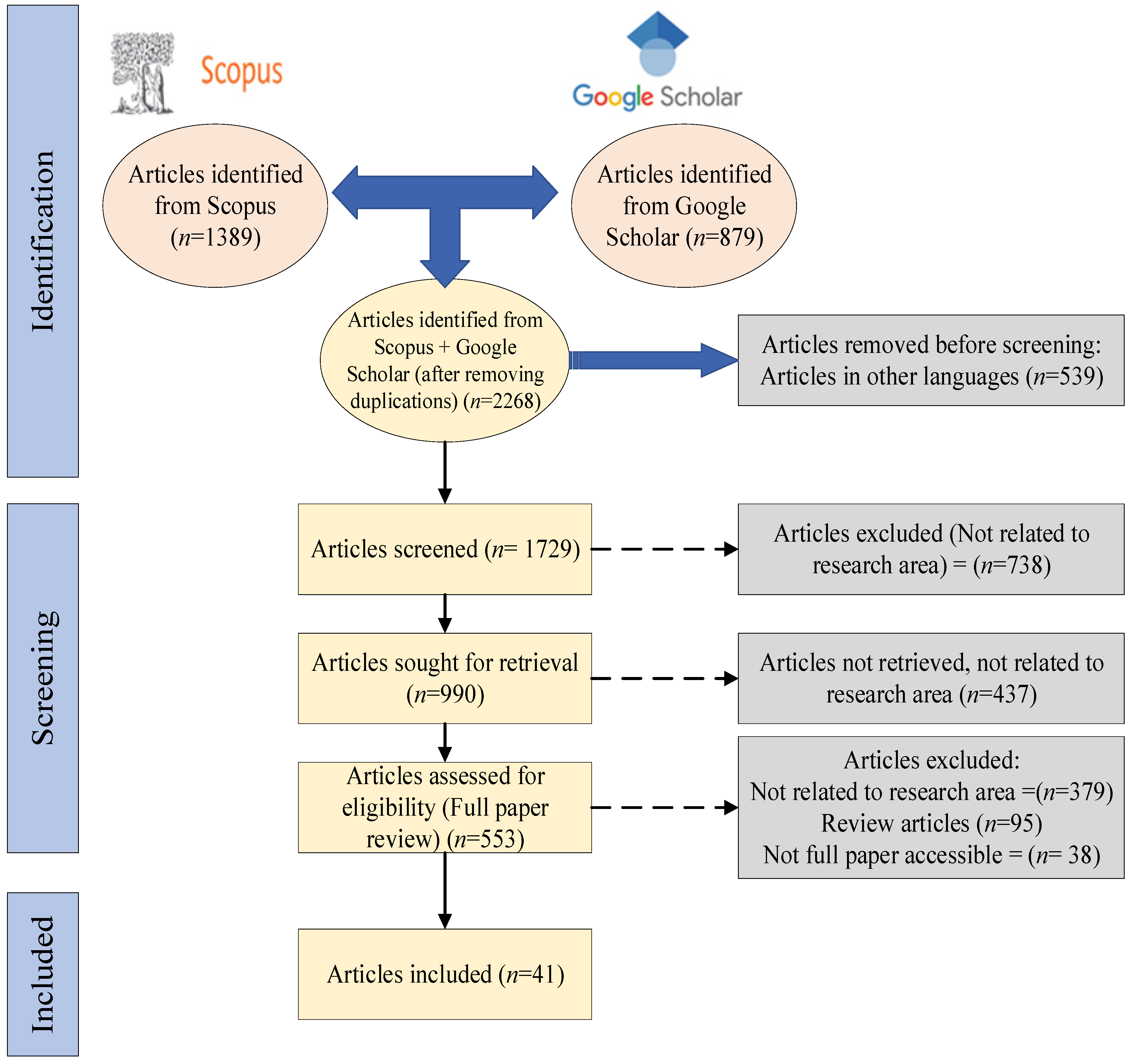
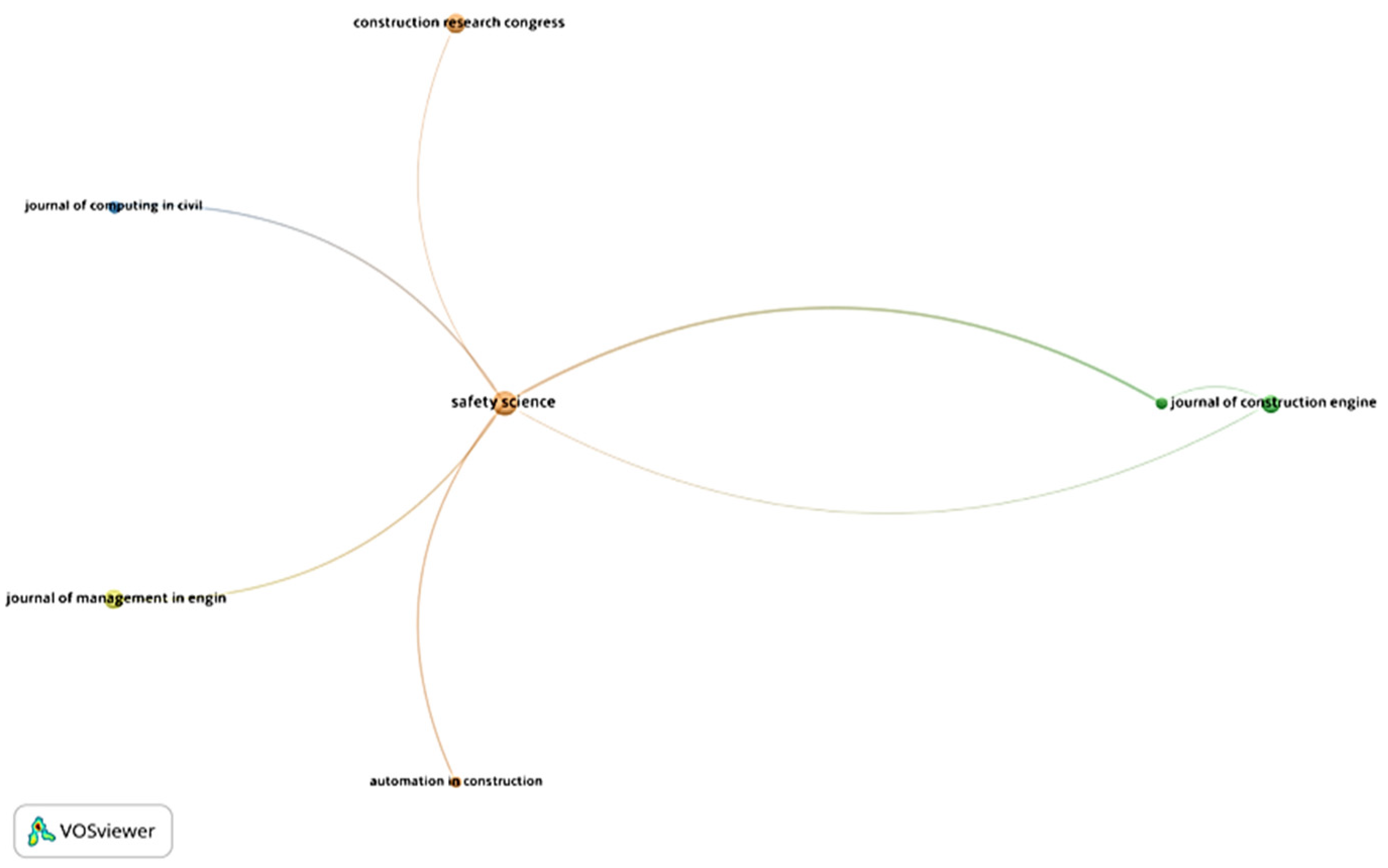
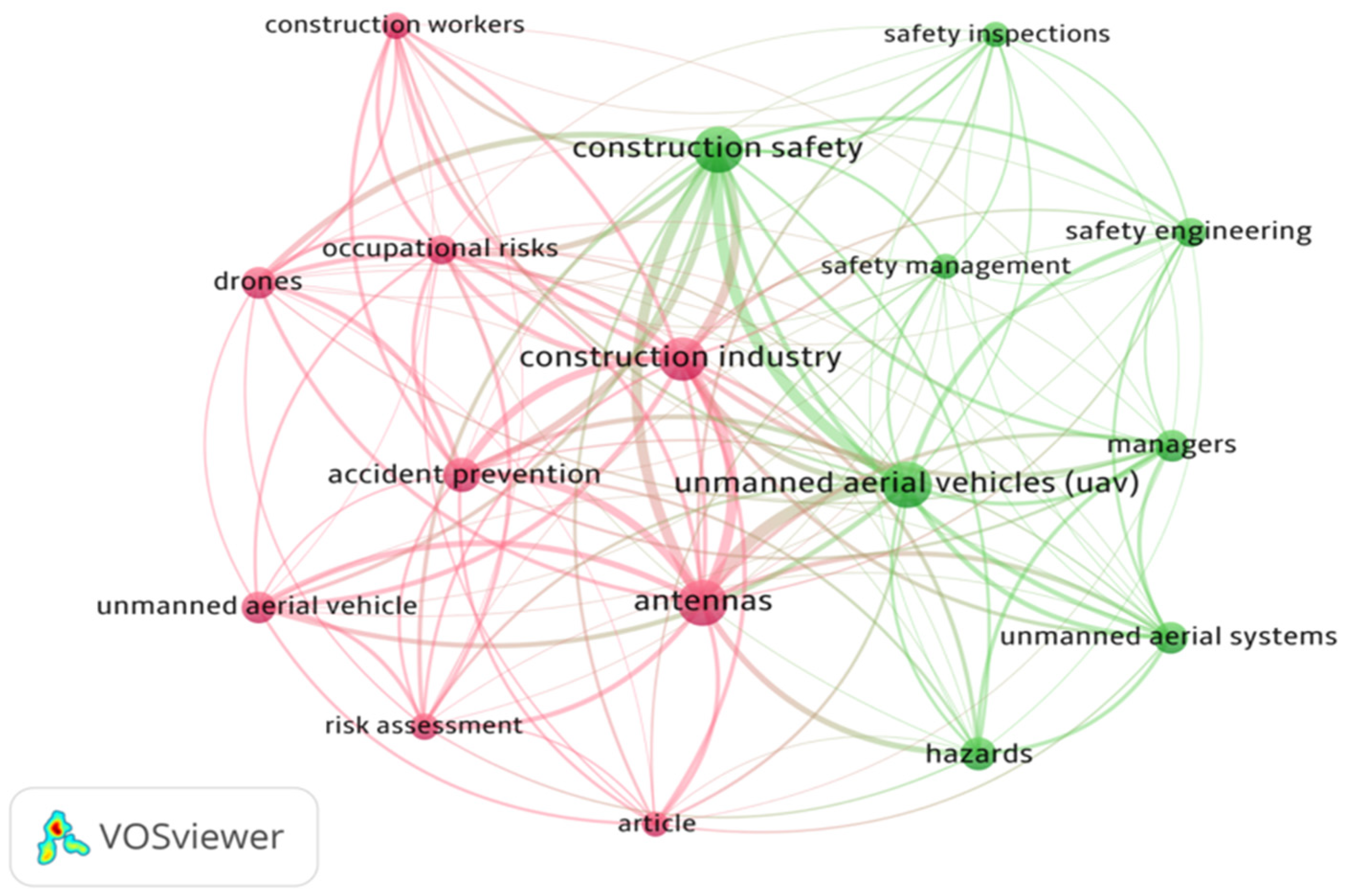
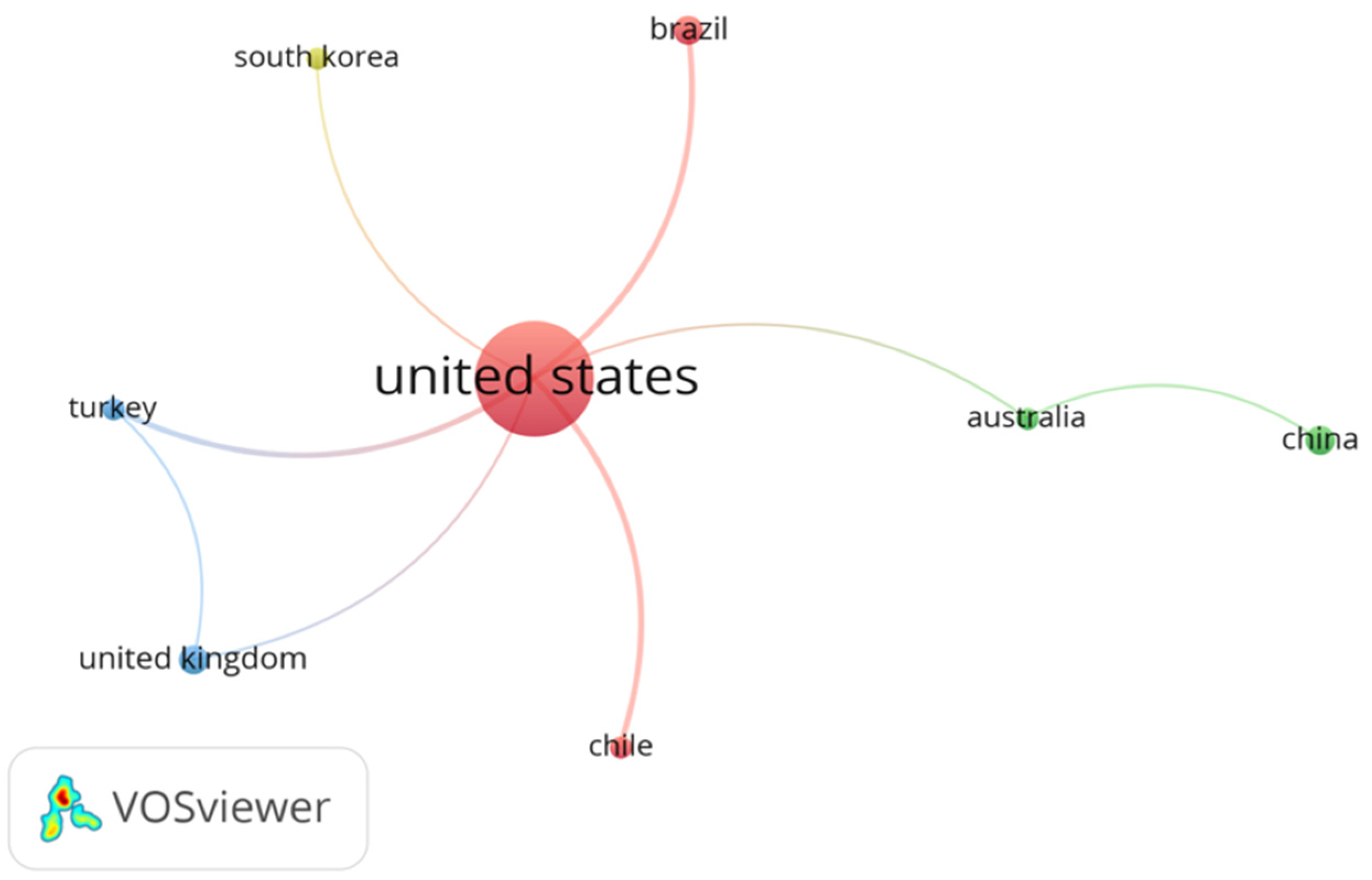
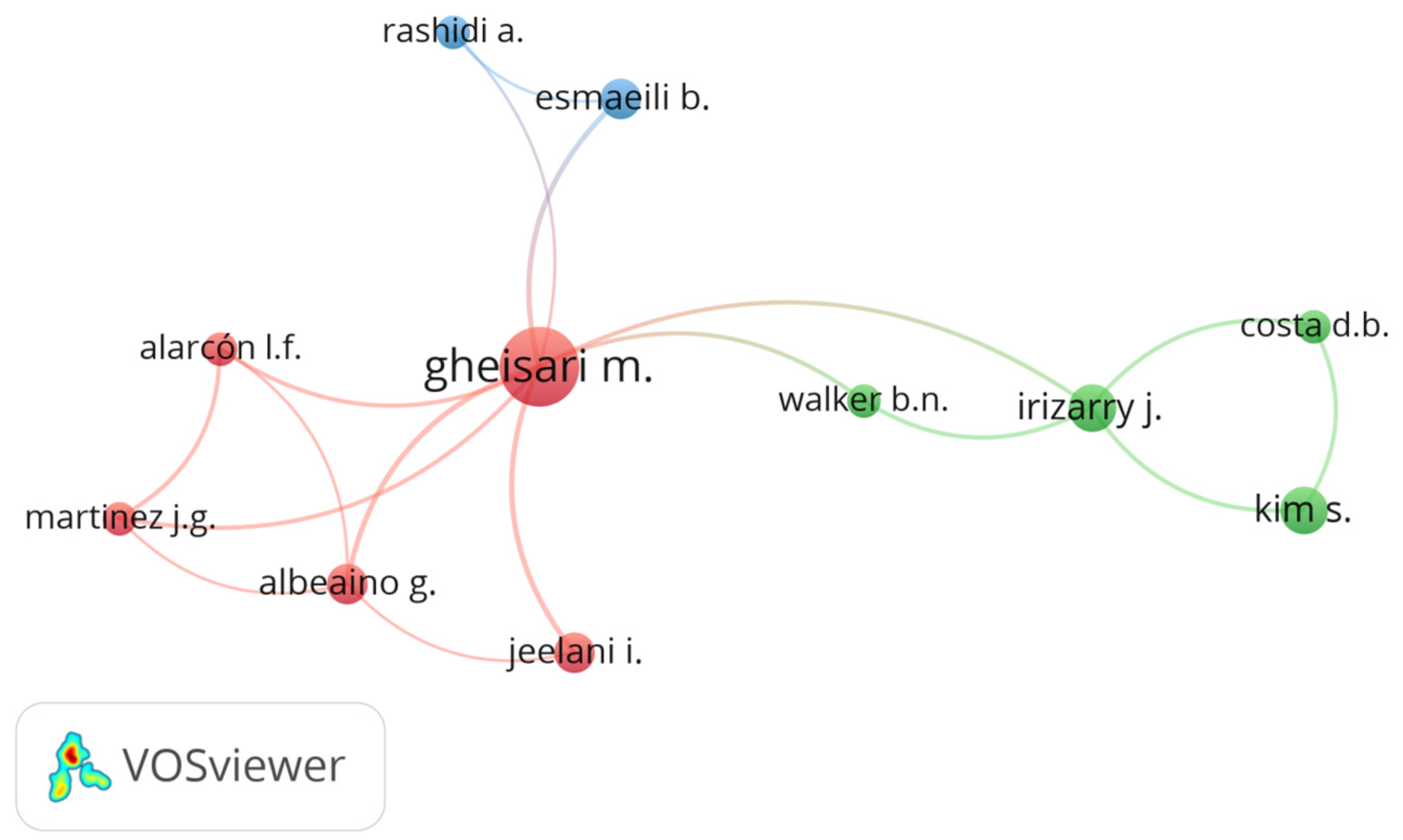

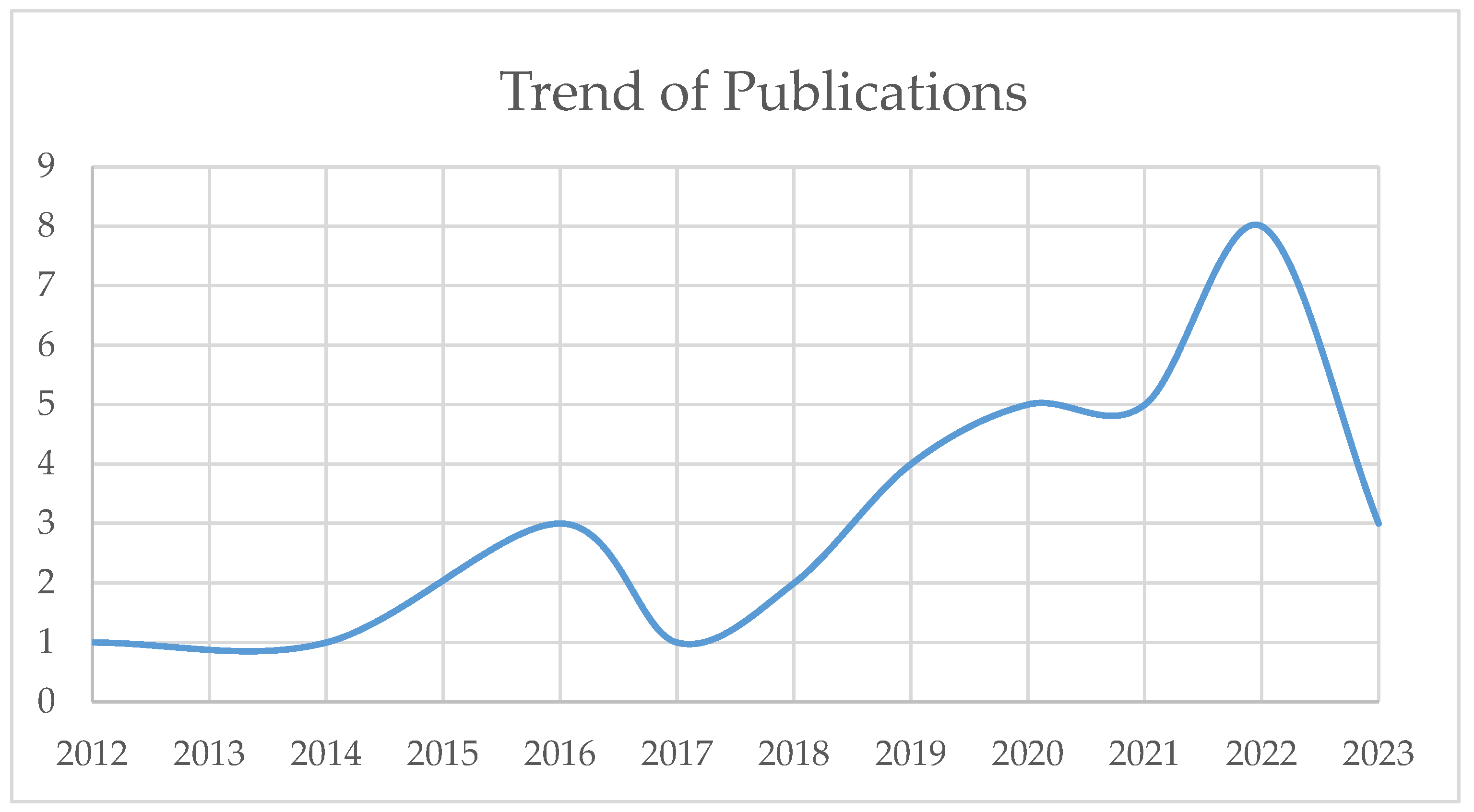
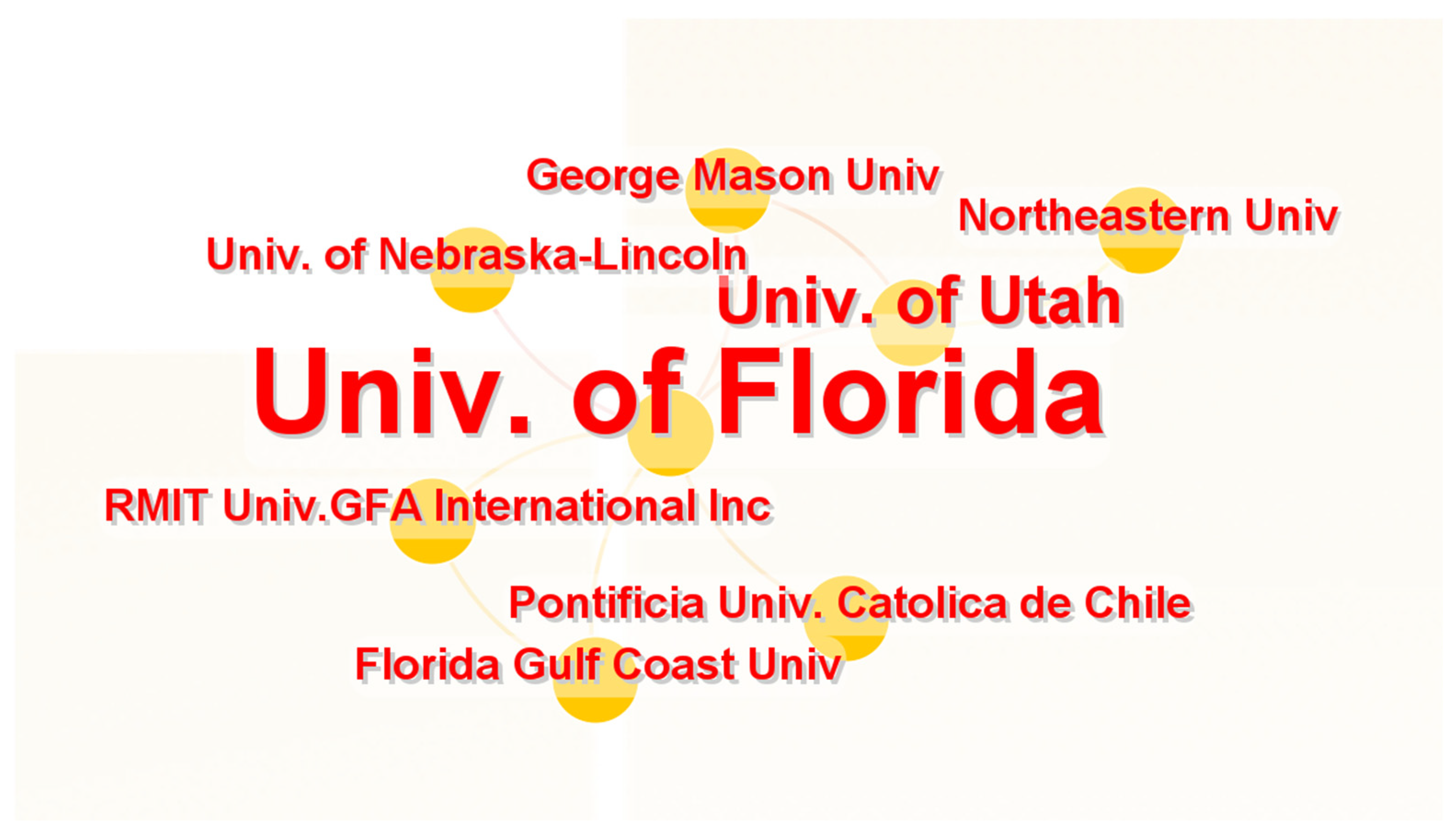

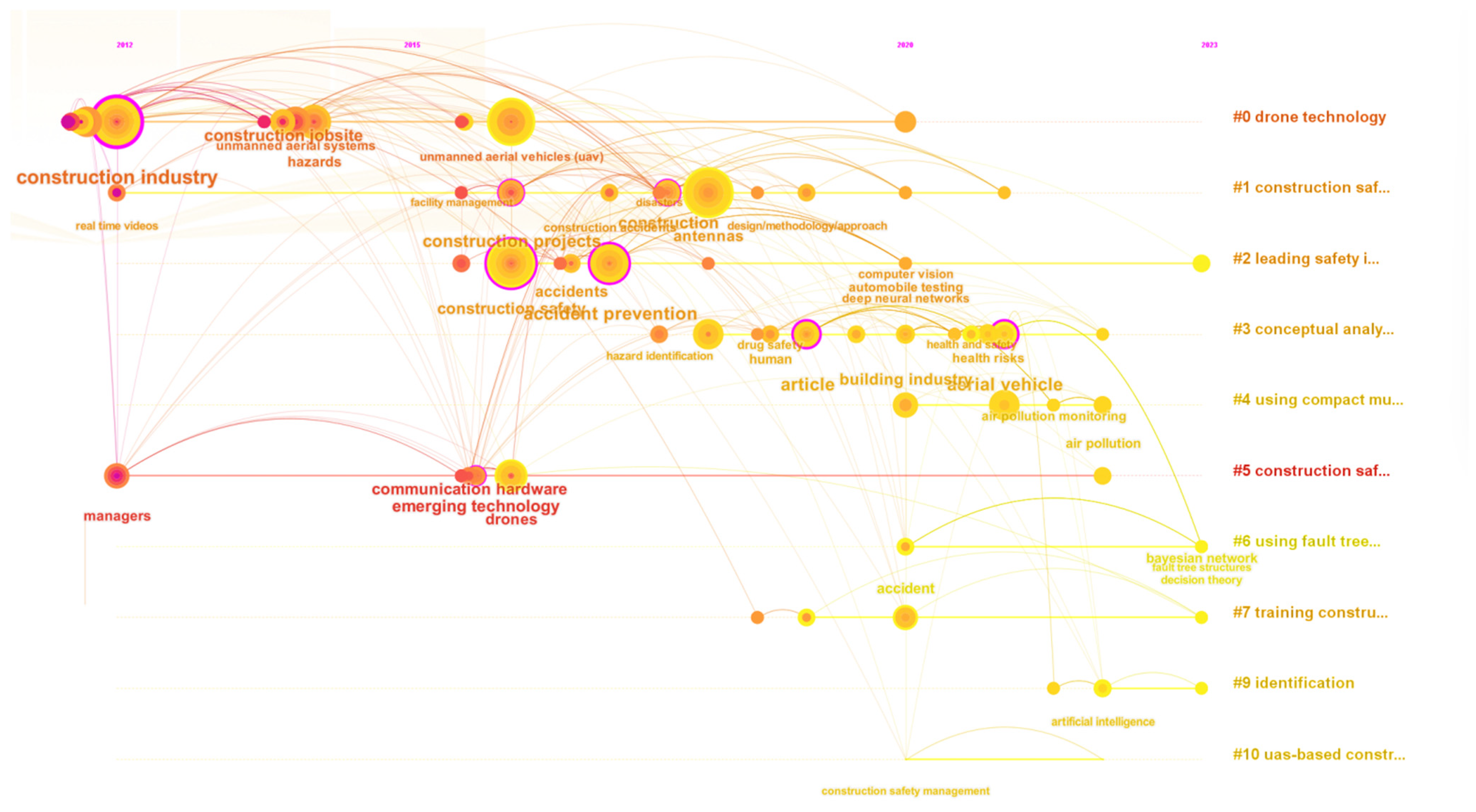
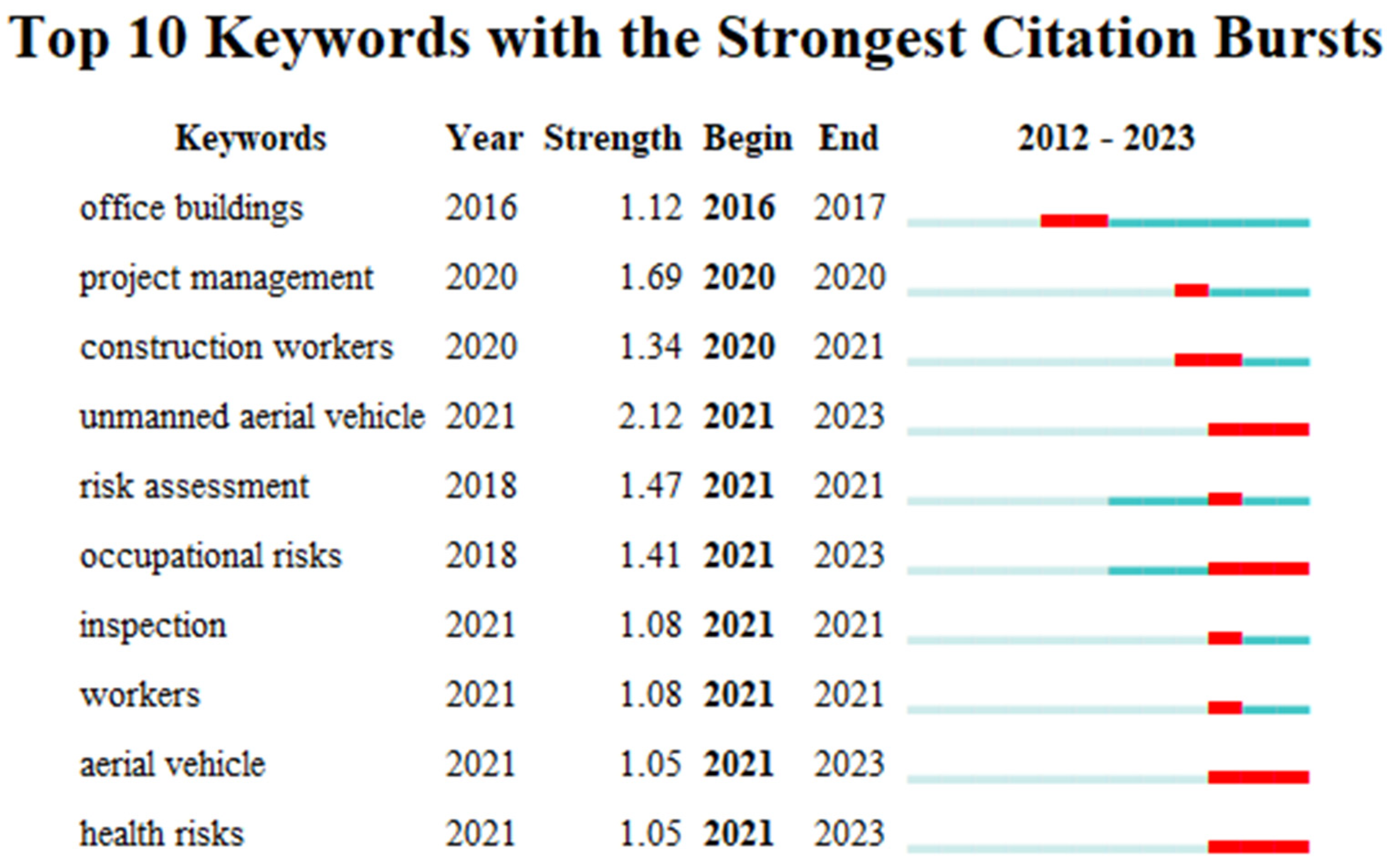
| Barrier | Influenced Barrier | Barrier | Influenced Barrier |
|---|---|---|---|
| B1 | B2, B21 | B16 | B23 |
| B2 | B17, B18, B3 | B17 | B18, B24 |
| B3 | B2 | B18 | B27 |
| B4 | B13, B25 | B19 | B20, B25 |
| B5 | B12 | B20 | B21 |
| B6 | B13, B16 | B21 | B31 |
| B7 | B14 | B22 | B23, B24 |
| B8 | B10, B9 | B23 | B17 |
| B9 | B29 | B24 | B17 |
| B10 | B15 | B25 | B20 |
| B11 | B30 | B26 | B30 |
| B12 | B16 | B27 | B30 |
| B13 | B14 | B28 | B29 |
| B14 | B21 | B30 | B31 |
| B15 | B8 | B31 | B30 |
Disclaimer/Publisher’s Note: The statements, opinions and data contained in all publications are solely those of the individual author(s) and contributor(s) and not of MDPI and/or the editor(s). MDPI and/or the editor(s) disclaim responsibility for any injury to people or property resulting from any ideas, methods, instructions or products referred to in the content. |
© 2025 by the authors. Licensee MDPI, Basel, Switzerland. This article is an open access article distributed under the terms and conditions of the Creative Commons Attribution (CC BY) license (https://creativecommons.org/licenses/by/4.0/).
Share and Cite
Zhong, W.; Rasouli, S.; Singh, A.K.; Mohandes, S.R.; Antwi-Afari, M.F.; Cheung, C.; Manu, P.; Agrawal, U. The Adoption of UAVs for Enhancing Safety in Construction Industry: A Systematic Literature Review. Intell. Infrastruct. Constr. 2025, 1, 3. https://doi.org/10.3390/iic1010003
Zhong W, Rasouli S, Singh AK, Mohandes SR, Antwi-Afari MF, Cheung C, Manu P, Agrawal U. The Adoption of UAVs for Enhancing Safety in Construction Industry: A Systematic Literature Review. Intelligent Infrastructure and Construction. 2025; 1(1):3. https://doi.org/10.3390/iic1010003
Chicago/Turabian StyleZhong, Wanqing, Sina Rasouli, Atul Kumar Singh, Saeed Reza Mohandes, Maxwell Fordjour Antwi-Afari, Clara Cheung, Patrick Manu, and Unnati Agrawal. 2025. "The Adoption of UAVs for Enhancing Safety in Construction Industry: A Systematic Literature Review" Intelligent Infrastructure and Construction 1, no. 1: 3. https://doi.org/10.3390/iic1010003
APA StyleZhong, W., Rasouli, S., Singh, A. K., Mohandes, S. R., Antwi-Afari, M. F., Cheung, C., Manu, P., & Agrawal, U. (2025). The Adoption of UAVs for Enhancing Safety in Construction Industry: A Systematic Literature Review. Intelligent Infrastructure and Construction, 1(1), 3. https://doi.org/10.3390/iic1010003









